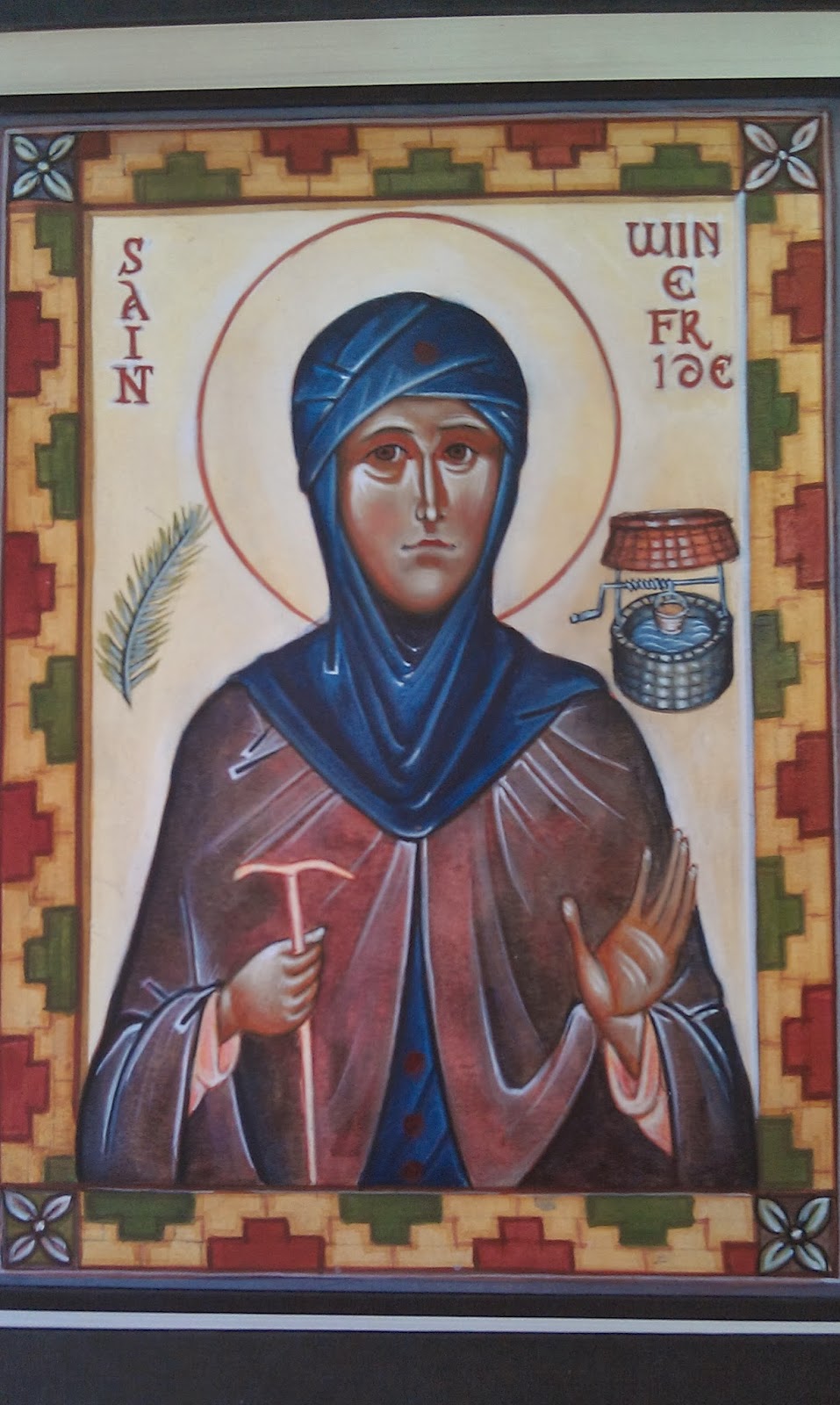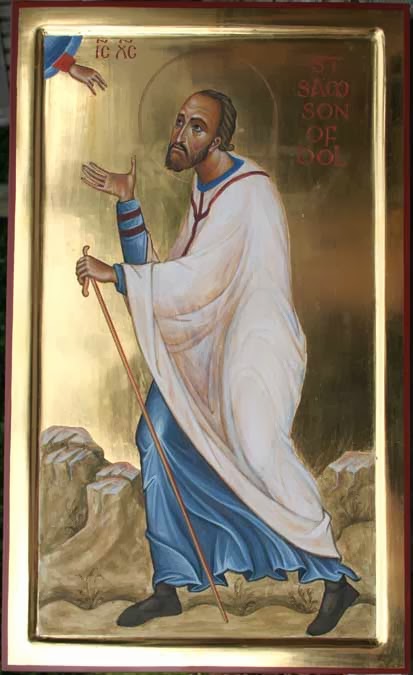 Is there such a thing as a new traditional image? How can you create something new without stepping outside tradition? Or is this something that we should not even attempt - a contradiction in terms?
Is there such a thing as a new traditional image? How can you create something new without stepping outside tradition? Or is this something that we should not even attempt - a contradiction in terms?Those who have ever attended an icon painting class will know that the method of teaching is to copy an existing icon and that deviation from the prototype is usually flatly forbidden. This is an important and useful part of the training - provided that the student is given an understanding of what it is he is copying and why the artist who painted the prototype made the decision regarding style and content that he did. This experience can lead some to conclude erroneously that there is no room for any creativity or originality in icons. In fact while originality from the artist is never sought as an end in itself, sometimes it is necessary - when for example there is no existing image of a particular saint.
The icon top left is St Winifred (also spelt Winefride), a Welsh saint from the 6th century. This was painted by Aidan Hart the English icon painter. I haven't spoken to him about this, but I am not aware of any other icon of St Windfride and so I conclude that he has created this. Aidan has created a number of these icons of ancient British saints and I have heard him describe the general methods he uses. He researches the saints so that he can work out what visual features characterise the saint. Then, he looks at his library of existing icons and as far as possible makes a composite picture from these to create the new figure in the right posture. Only if he cannot do this does he introduce something completely new. It struck me that the inspiration for St Winefride might be this icon of St Theodosia (see below) which comes from Mt Sinai and was painted in the 13th century; just as his Samson of Dol seems to be drawn from an icon of Moses receiving the 10 commandments of the same period (again both are shown below) . I do know for certain that these are the inspiration, but I do know that he has based his style on this golden age of icon painting that this belongs to and so it is possible. It is a Greek style in which has a relatively high level of naturalism (for icons) and so modern Western people tend to relate to it easily.
In regard to St Windefride, it almost looks as though Aidan might have copied it from a mirror! He has not done a straight copy though, he makes sure that it could be the saint he wishes to depict and so St Winefride is wearing the habit of a religious and has the staff of authority of an abbess.
If I were faced with the problem of creating something new, I would have done precisely what I am speculating Aidan might have done. Recently I decided that I would like to paint an image of St Winefride too. I grew up near the pilgrimage site in Wales and for personal reasons had prayed to St Winefride. I promised her that I would paint a icon of her and donate it to the community of nuns who run the residential retreat centre at the tow of Holywell in North Wales where it is situated. So the first thing I did was look around to see what already existed and then found Aidan's. Very happily I took from that directly, but I added to the image the palm branch of a martyr and the well to depict the source of the healing waters which still flow today. I have also added the Romanesque/gothic style border, which characterises the Western sacred tradition of the Roman Rite and which I always like to include in my work. As always, I think Aidan does a better job, but I am happy nevertheless that this image will help the prayers of future pilgrims to Holywell.
Images below, from top: St Winefride painted by Aidan Hart, St Theodosia, and my St Windefride; then Samson of Dol painted by Aidan Hart and then the 12th century Moses from Mt Sinai.




